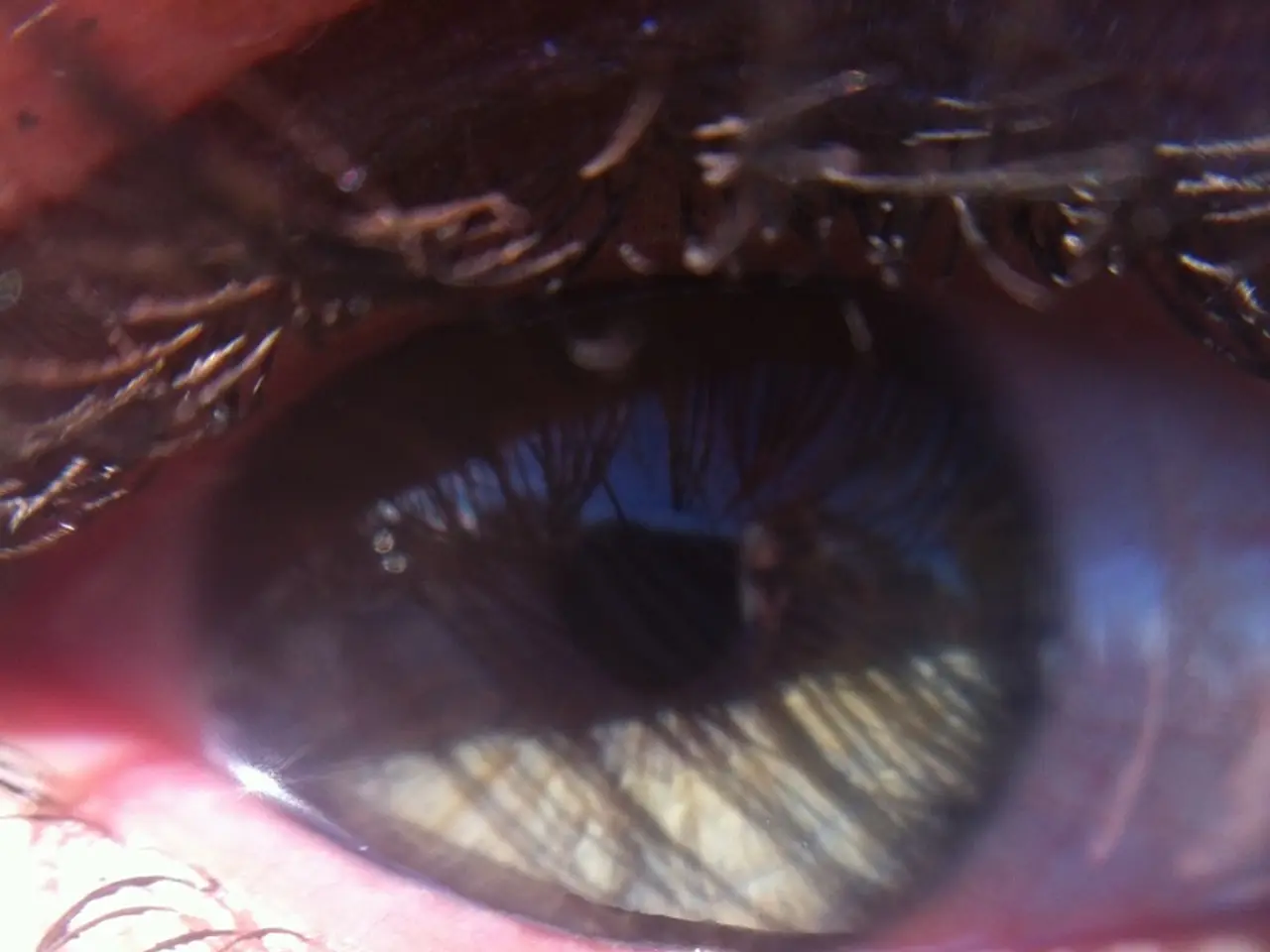The Potential Efficiency of Autologous Tear Drops for Dry Eye Conditions
For individuals suffering from moderate to severe dry eye disease (DED), a promising treatment option has emerged: Autologous Serum Eye Drops (ASEDs). These eye drops, made from a person's own blood serum, have been found to provide significant relief from symptoms and promote better ocular surface healing [1][2][3].
ASEDs contain a multitude of healing factors, nutrients, and growth factors, making them an effective solution for those who do not find adequate relief from regular artificial tears. The effectiveness of ASEDs varies among individuals and the severity of their condition, but clinical results show benefits in patients with severe DED, persistent epithelial defects, and ocular surface inflammation [3].
A randomized study found a significant improvement in dry eye symptoms after just two weeks of ASED use [1]. The healing properties of ASEDs come from growth factors, anti-inflammatory properties, and antioxidants like albumin [3]. Autologous serum tears and allogeneic serum tears have comparable efficacy, expanding accessibility in some cases [3].
However, ASED treatment is more expensive than artificial tears. The cost depends mainly on the laboratory preparing the serum and how much the person needs. Generally, ASED treatment involves a blood draw, serum processing in a lab, and custom preparation, making it a specialized prescription treatment rather than an over-the-counter product [4].
For those who cannot afford ASEDs, the Florida Lions Eye Bank Foundation runs a serum tears assistance program, providing free ASEDs for eligible individuals. A donation of $1,140 can pay for a year's supply of ASEDs for one person through the foundation [5].
Before using ASEDs, it's essential to ask a doctor about the proper way to store both sealed and unsealed vials, when to discard a vial after opening it, and how long vials may safely remain frozen. It's also important to note that ASEDs do not have Food and Drug Administration (FDA) approval as a treatment for dry eye, and most health insurance policies do not provide coverage for them [6].
For mild dry eye symptoms, over-the-counter treatments can help alleviate discomfort. When standard treatment options do not help, doctors may suggest ASEDs, in-office procedures such as intense pulsed light or punctal plugs, or prescription medications like cyclosporine (Restasis) or lifitegrast (Xiidra) [7].
In some cases, certain lifestyle adjustments may also help alleviate dry eye symptoms, including increasing water intake, getting enough sleep, using a humidifier, taking breaks from screens, avoiding smoke, wind, and air conditioning, and wearing wraparound sunglasses outside [8].
In summary, ASEDs offer superior therapeutic benefits compared to artificial tears, especially for severe dry eye. However, they are more costly and require a clinical process involving blood collection and preparation. For precise pricing, patients usually need to consult their ophthalmologist or treatment provider.
- Established treatments for mild dry eye symptoms can be purchased over the counter to alleviate discomfort.
- For individuals with moderate to severe dry eye disease, Autologous Serum Eye Drops (ASEDs) have emerged as a promising treatment option, offering significant relief and better ocular surface healing.
- The efficacy of ASEDs can vary among individuals and the severity of their condition, but clinical results show benefits in patients with severe DED, persistent epithelial defects, and ocular surface inflammation.
- Allogeneic serum tears and Autologous serum tears have comparable efficacy, expanding accessibility in some cases, although ASED treatment is generally more expensive due to the laboratory preparation process.
- The Florida Lions Eye Bank Foundation runs a serum tears assistance program, providing free ASEDs for eligible individuals, with a donation of $1,140 covering a year's supply for one person.
- Before using ASEDs, it's crucial to follow proper storage guidelines, discard a vial after opening it, and be aware that ASEDs do not have Food and Drug Administration (FDA) approval and are not typically covered by Medicare.
- In addition to ASEDs, doctors may suggest in-office procedures like intense pulsed light or punctal plugs, or prescription medications like cyclosporine (Restasis) or lifitegrast (Xiidra) for those who find standard treatments ineffective.
- Lifestyle adjustments, such as increasing water intake, getting enough sleep, and wearing wraparound sunglasses, can also help alleviate dry eye symptoms in some cases.




